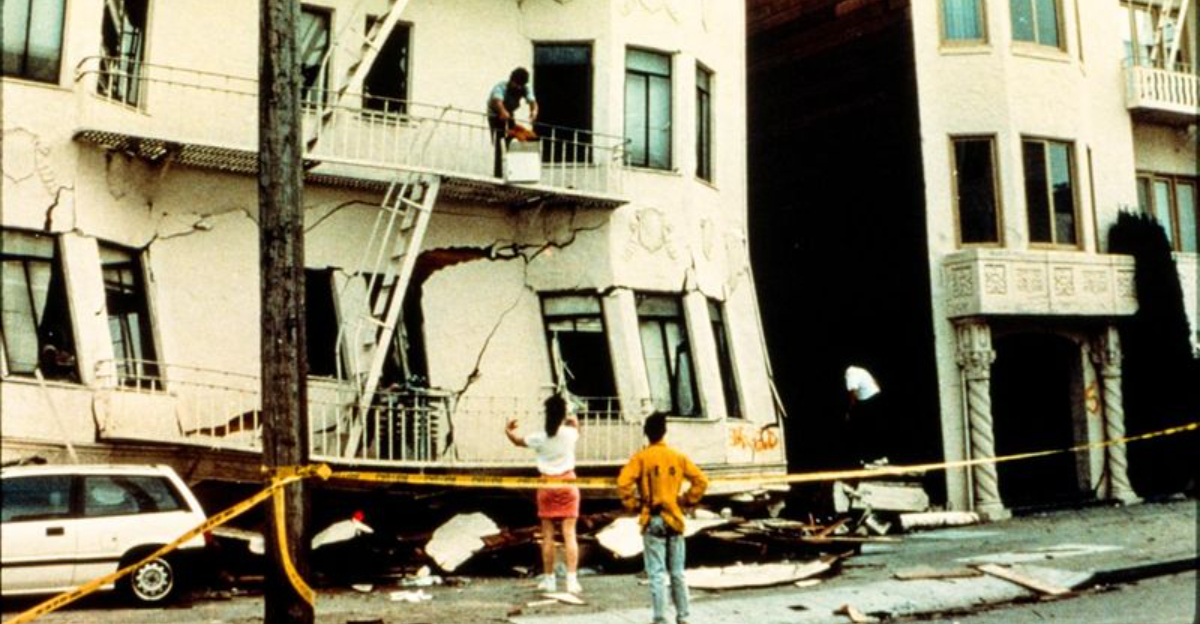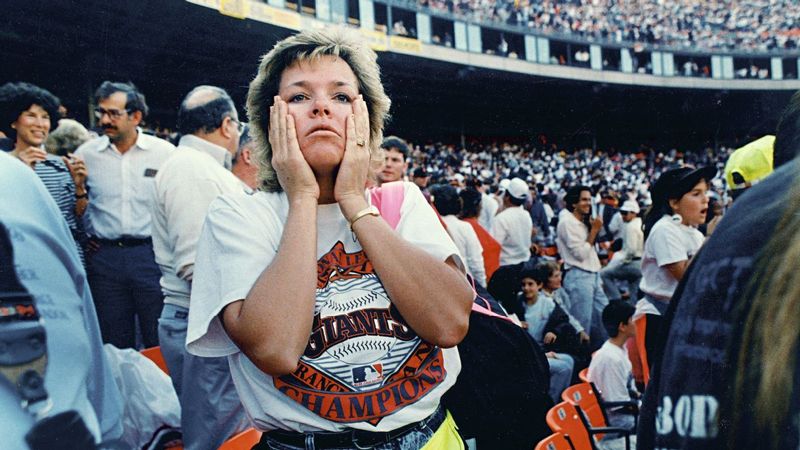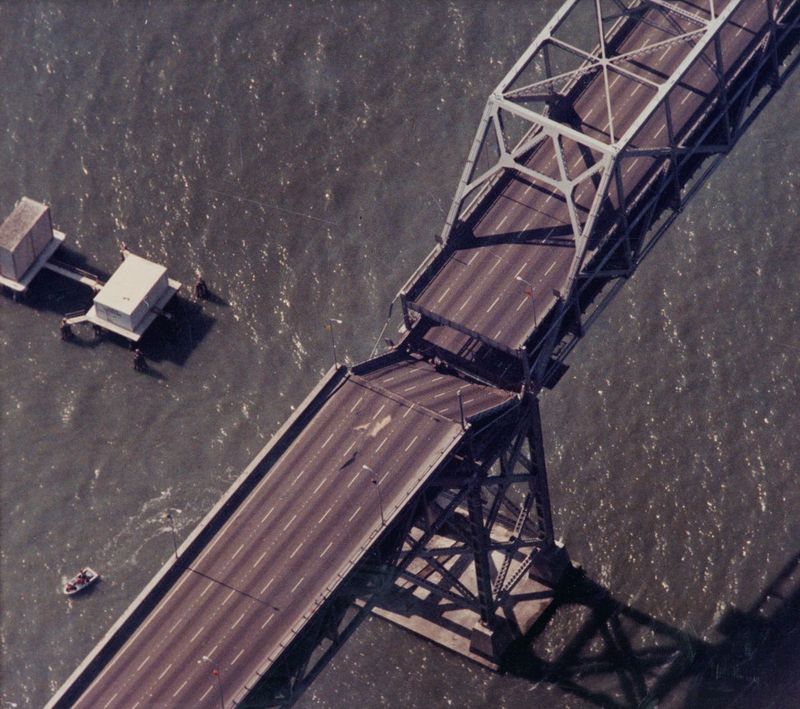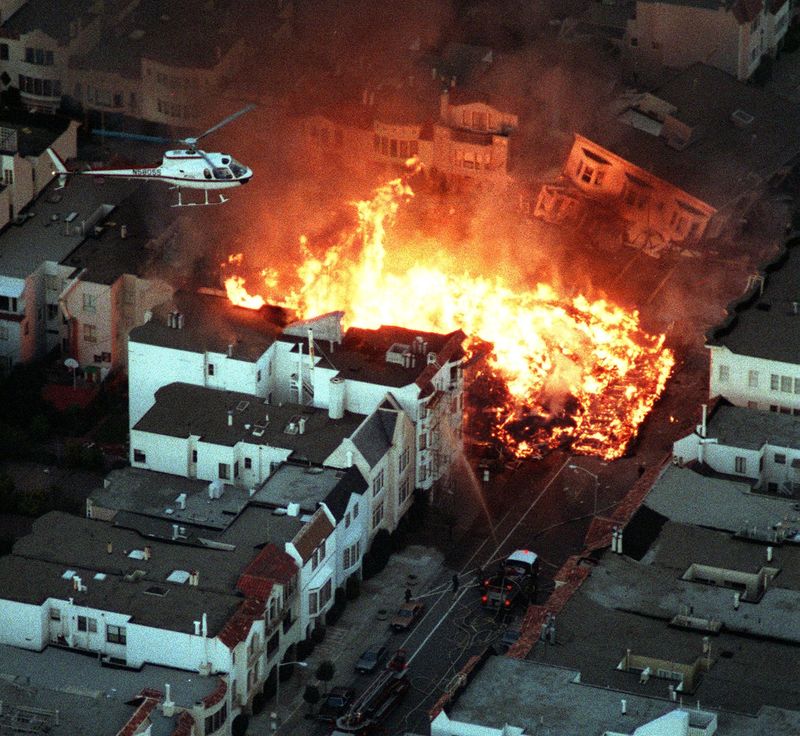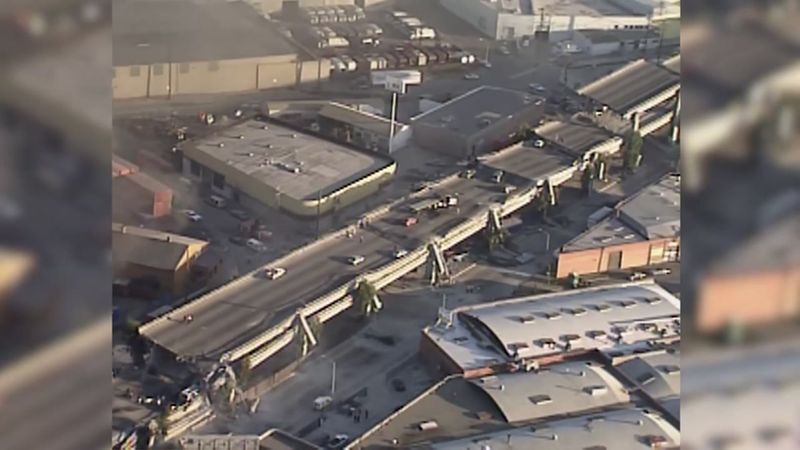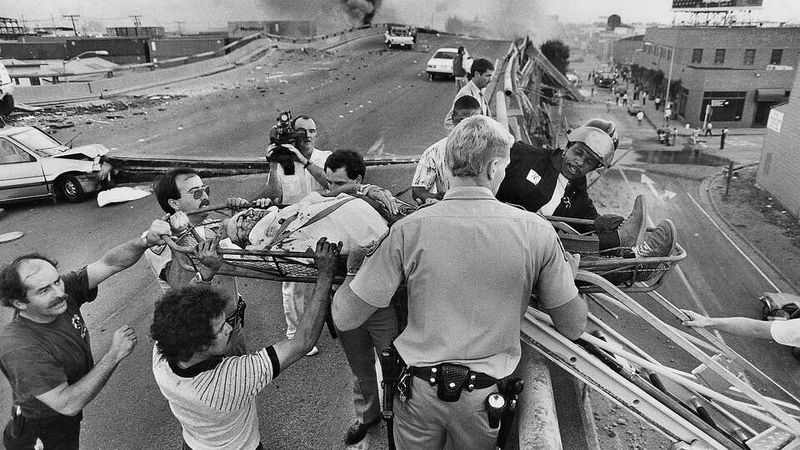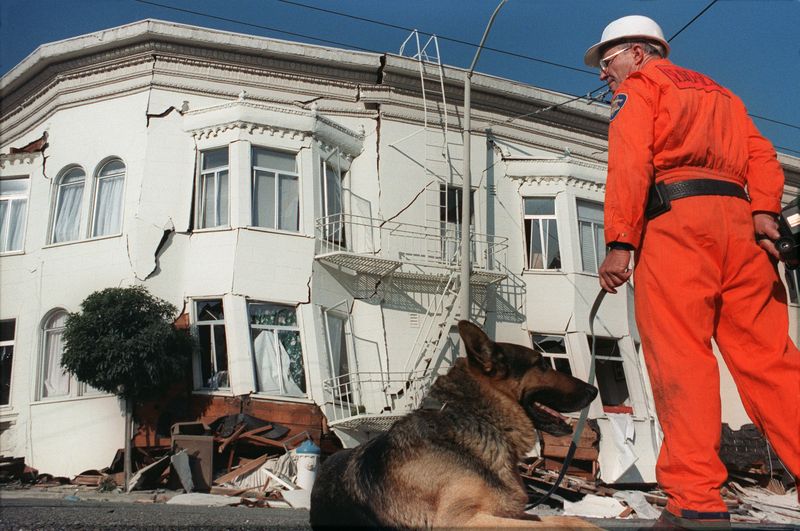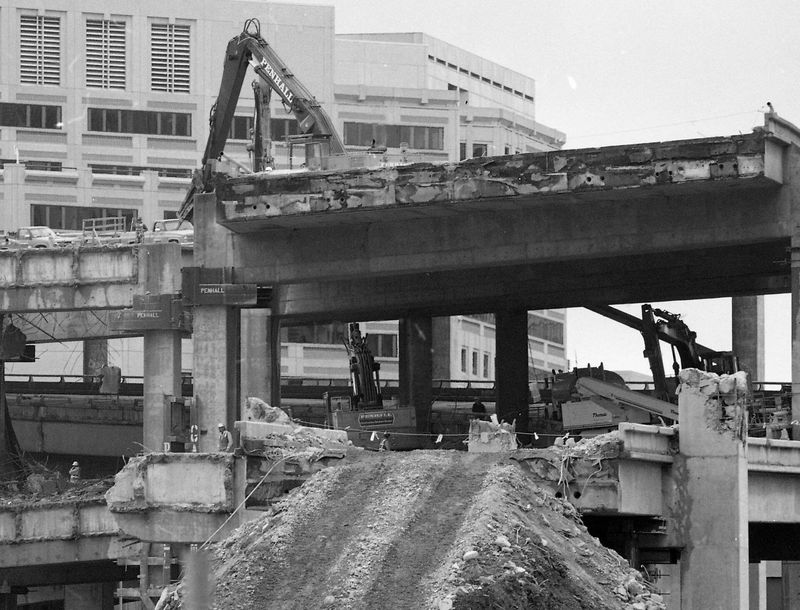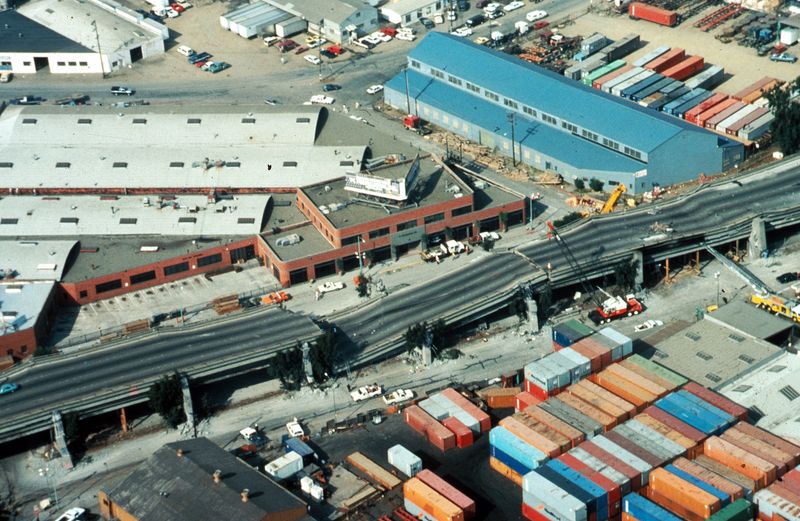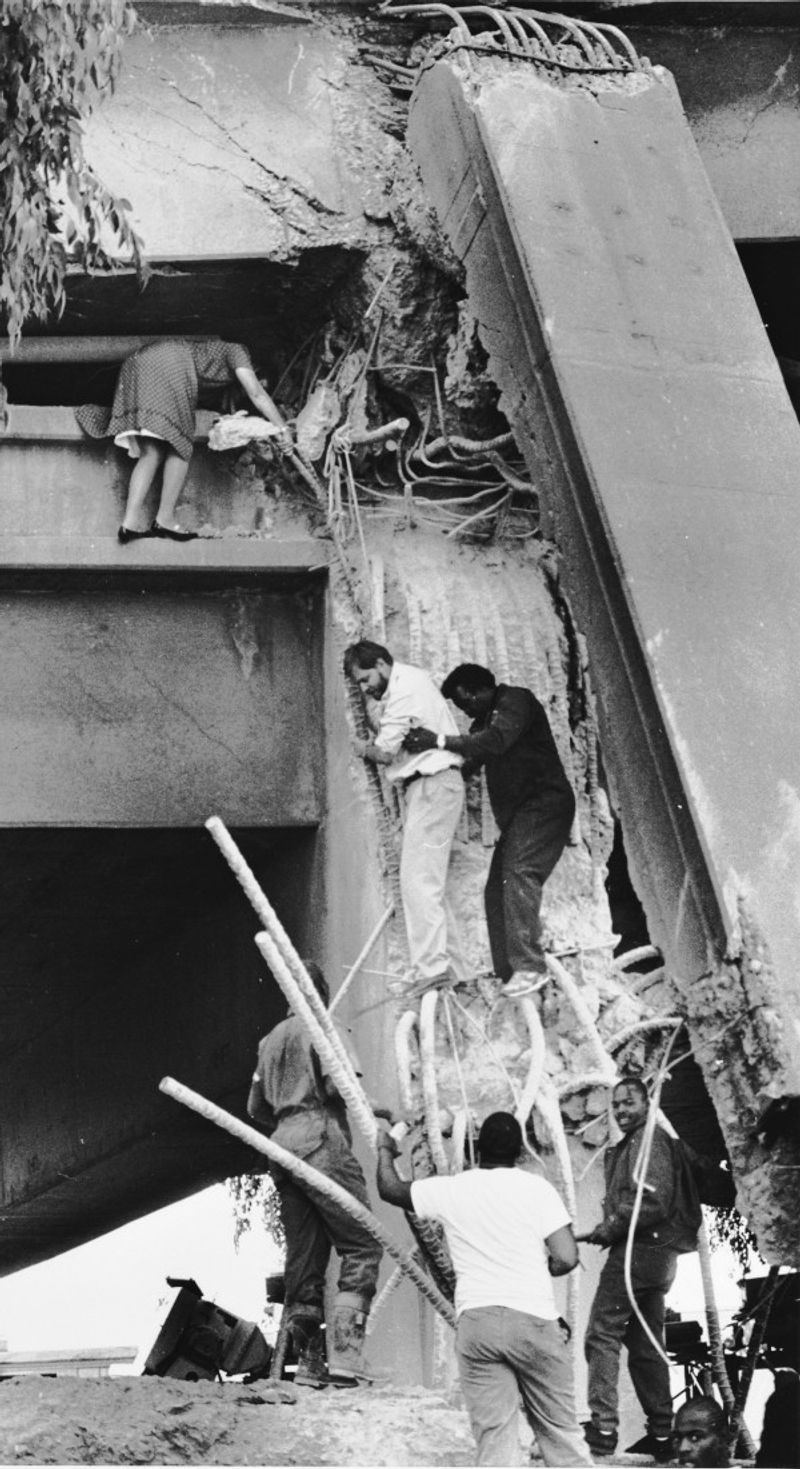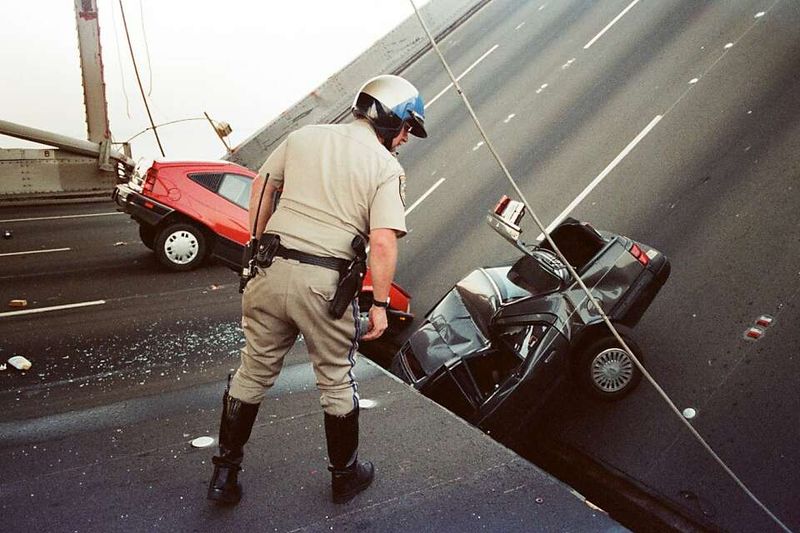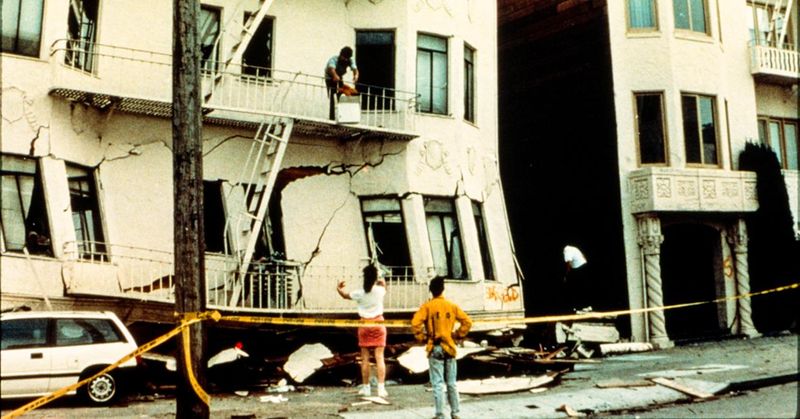On October 17, 1989, at 5:04 p.m., the Bay Area was rocked by a 6.9 magnitude earthquake—later named the Loma Prieta Earthquake—that changed the course of California history in just 15 seconds. With the World Series underway and rush hour traffic clogging the region’s highways, the quake’s timing couldn’t have been worse. These 12 shocking moments reveal just how devastating—and unforgettable—that day truly was.
1. Candlestick Park Shakes as Millions Watch Live
In an era when baseball was America’s favorite pastime, the 1989 World Series was a moment that millions awaited. Families gathered around their television sets, eager to witness the duel between the San Francisco Giants and the Oakland A’s. Suddenly, the ground quivered, and ABC’s live broadcast froze mid-sentence. This became the first major earthquake ever captured live on television.
For a moment, the crowd at Candlestick Park was engulfed in silence, eyes wide with disbelief. Yet, amidst the chaos, the spirit of the game lingered, echoing resilience through the stadium.
2. The Bay Bridge Snaps in Two
At the heart of the Bay Area’s infrastructure, the San Francisco–Oakland Bay Bridge was a symbol of connection. But on that fateful day, a section of the upper deck collapsed onto the lower deck, leaving a haunting image of twisted metal and stranded vehicles.
For residents, the bridge’s failure was not just an infrastructural crisis but a chilling reminder of nature’s unpredictability. One motorist lost their life, underscoring the quake’s lethal power. The bridge’s dramatic collapse became a symbol of the quake’s unexpected force and the challenges of rebuilding.
3. The Cypress Freeway Disaster
The collapse of the Cypress Street Viaduct in Oakland was the quake’s darkest chapter. The double-decker freeway pancaked, crushing cars and trapping victims beneath tons of concrete and steel. Rescue efforts were heroic, as teams worked tirelessly, digging through the rubble.
For days, the air was filled with the sound of jackhammers and cries for help. Families waited anxiously, hoping against hope. The tragedy claimed 42 lives, marking it as the earthquake’s deadliest episode. Yet, amidst despair, stories of bravery and survival emerged, painting a poignant picture of human resilience.
4. Fires Rage in the Marina District
The Marina District, with its picturesque views, faced an inferno after the earthquake. Built on landfill, the ground liquefied, causing gas lines to rupture and fires to erupt. The flames devoured everything in their path, from homes to history.
Firefighters, undeterred by broken water mains, ingeniously pumped water from the bay, battling the blaze for hours. The scene was apocalyptic, yet amidst the chaos, the community came together, offering support and solace. This fiery ordeal highlighted the vulnerabilities of urban planning and the resilience of communal spirit.
5. Traffic Saves Lives
Irony lay in the fact that rush hour traffic, typically a bane for commuters, turned out to be a lifesaver. As cars crawled along the highways, many had not reached the sections that would soon collapse. The timing, unkind yet oddly fortuitous, ensured that fewer lives were lost.
What could have been a calamity of greater proportions was mitigated by the traffic jams. Had the quake struck a mere 30 minutes earlier, countless more might have perished. This serendipitous twist of fate became a poignant reminder of life’s unpredictability.
6. Television Newsrooms Go Dark
The quake didn’t just shake buildings; it disrupted communication. Bay Area newsrooms found themselves plunged into darkness, broadcasts abruptly cut. Reporters, caught mid-sentence, were left in the dark, both literally and figuratively.
With power and phone lines down, the community turned to battery-powered radios for updates. In a pre-digital world, this communication blackout was a stark reminder of our reliance on technology. Yet, it also highlighted the ingenuity of those who found ways to disseminate crucial information, ensuring the public stayed informed in those critical hours.
7. A Hero Dog Helps Rescuers
In the chaos of the Cypress Freeway collapse, a hero emerged with a wagging tail and an extraordinary nose. Murphy, a search-and-rescue dog, tirelessly sniffed through debris to locate survivors. His efforts led to several rescues, turning him into a symbol of hope.
With each bark, Murphy provided reassurance to those trapped and those desperately searching for loved ones. His actions reminded everyone of the profound bond between humans and animals, especially in times of crisis. Tales of his bravery spread, offering comfort amid the devastation of that day.
8. The Embarcadero Freeway Crumbles
The controversial Embarcadero Freeway, a scar on San Francisco’s skyline, suffered significant damage during the quake. Its crumbling structure catalyzed its eventual demolition, paving the way for the waterfront’s transformation.
For years, the freeway had been a point of contention, and its destruction became an opportunity for renewal. The city seized this chance, revitalizing the area into a vibrant part of the community. This moment, born from destruction, became a testament to San Francisco’s ability to reinvent itself and embrace change amidst adversity.
9. The Quake Reverberates Through Silicon Valley
The epicenter may have been in the Santa Cruz Mountains, but its impact was felt throughout Silicon Valley. Tech giants like Apple and Hewlett-Packard experienced power outages, halting operations and leaving campuses eerily quiet.
This unexpected silence was a reminder of vulnerability in an area synonymous with innovation. The quake’s reach into the heart of technology underscored the balance between human endeavor and nature’s whims. Despite the disruptions, the tech community’s quick recovery showcased their resilience and commitment to pushing boundaries, even in the face of nature’s challenges.
10. Relief Efforts Mobilize in Hours
Amidst chaos, the Bay Area witnessed a wave of compassion. Emergency teams, neighbors, and volunteers swiftly organized relief efforts, forming bucket brigades, aiding the injured, and directing traffic through darkened streets.
This rapid mobilization was a testament to the spirit of community. Strangers became allies, united by a shared purpose. The collective response highlighted an enduring truth: in times of crisis, the human capacity for kindness and cooperation prevails. As the dust settled, these efforts provided a beacon of hope and a model for future disaster responses.
11. Earthquake Preparedness Gets a Wake-Up Call
The quake exposed glaring weaknesses in California’s infrastructure, prompting a profound reevaluation of earthquake preparedness. Building codes, emergency plans, and retrofitting initiatives underwent drastic changes.
This wake-up call led to sweeping reforms, ensuring that structures were better equipped to withstand future tremors. As a result, the state embraced a new era of preparedness, with communities more aware and educated about seismic safety. This moment of reckoning became a turning point, transforming fear into action, ensuring that lessons learned were not forgotten, but rather used to fortify the future.
12. The Human Toll: 63 Dead, Thousands Injured
In the quake’s aftermath, the human toll was staggering: 63 lives lost, over 3,700 injured, and damages exceeding $6 billion. Yet, in this devastation, stories of courage and community emerged.
The Bay Area, resilient and tenacious, rallied to support one another. Candlelight vigils honored the victims, offering solace to grieving families. This shared mourning became a testament to the unbreakable spirit of those who endured. The earthquake wasn’t just a disaster; it was a defining moment, shaping a community’s identity and reinforcing its strength amid adversity.
